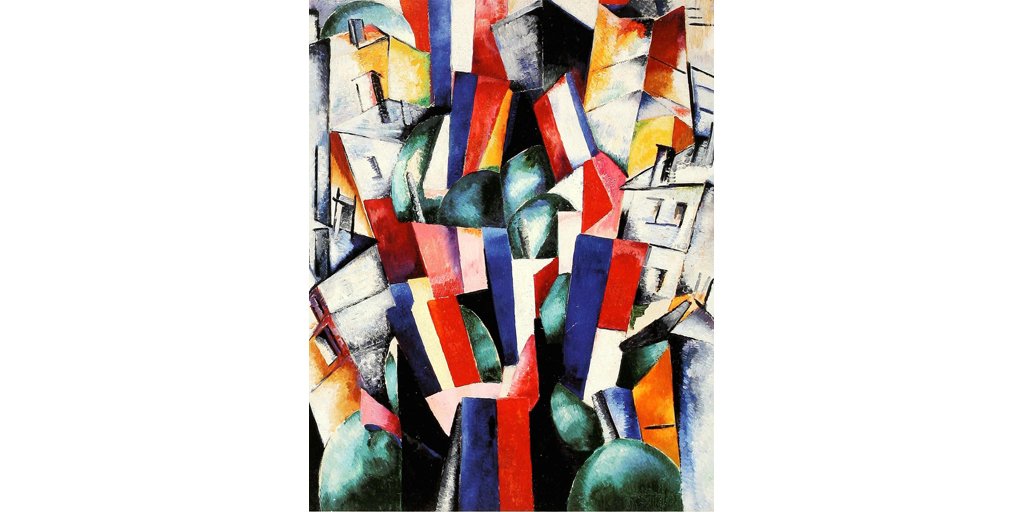Aleksandra Ekster, City, 1913. Oil on canvas, 34 5/6" x 27 3/4". Regional Picture Gallery, Vologda.
Ukrainian-born Aleksandra Ekster (1882-1949) was a part of the cultural avant-garde of Kiev, as well as that of Paris, where she visited often and eventually made a permanent home in 1924. As a young woman, Ekster absorbed a multitude of influences and refused to be confined to a particular movement; her work has been associated with everything from traditional peasant crafts and Cubo-Futurism, to Suprematism, Constructivism and Art Deco. Reflecting a similar eclectic mix of sensibilities from nationalism to bold modernism, her Parisian apartments was noted for having Picasso and Braque’s paintings on the walls, and Ukrainian carpets on the floor. Throughout her career, Ekster experimented across media and genres. In addition to painting, drawing, and sculpture, she became heavily involved in designing fashion, costumes, and theatrical sets - typically characterized by their multi-colored, dimensional elements, innovative transparency, and expression of movement.
All of those qualities are evident as well in this 1913 painting by Ekster entitled City, which offers a dynamic Cubist collision of forceful color and geometric shapes: faceted, rectilinear buildings and curved green domes (tree tops)are interspersed with abstracted tri-color flag-like slabs. All parts and spaces merging and pushing upward, outward, rhyming, repeating, contrasting, pulsating. Ekster has succeeded in picturing the vital, modern rhythm of the city.

